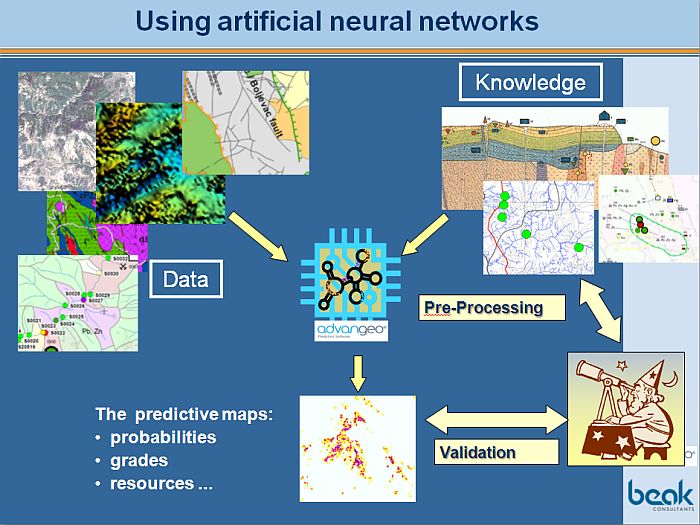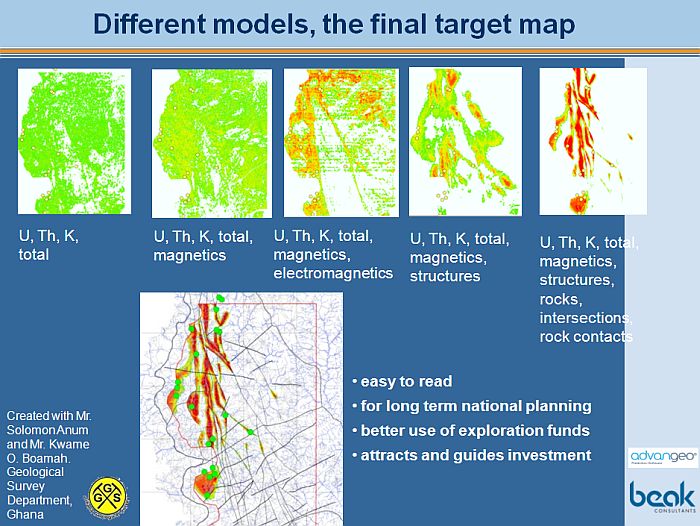 |
|
advangeo® Minerals
|
|
The extension advangeo® Minerals was developed to adapt the advangeo® Prediction Software to commodity-related questions. The advangeo® Prediction Software uses a data-driven modelling approach based on artificial intelligence algorithms, which can be used for the interpretation of various geoscientific data to conduct both qualitative and quantitative predictions. The extension assists the user in each step from data preparation, model generation to the creation of forecast calculations.
Qualitative Prediction (Prediction of localities) Qualitative predictions provide information about the probabilities of the occurrence of a certain type of mineralisation at a certain locality, but not about its intensity. The model training requires known localities of mineralisations with the same or similiar genetic properties. Through sensitivity analysis, the software can be used to develop and improve genetic models and concepts. The workflow of the modelling starts with the stepwise sensitivity analysis of related parameters (localisation of the mineralisation) on available input data layers (e. g. geological, geochemical, geophysical, tectonic maps). Afterwards, the model is generated by the combination of sensitive layers. The calculation result of a qualitative prediction is a prospectivity map. |
| Example of a qualitative prediction: Prediction of localities of gold mineralisations in NW Ghana |
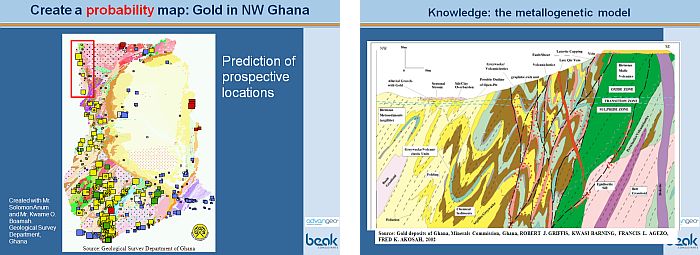 |
|
Generel workflow: Integration of data layers and known mineralisations |
|
Improvement of prediction results by stepwise adding of data layers
|
|
Quantitative prediction (Prediction of grades / tonnages and localities)
Quantitative predictions provide information about the occurrence of a certain mineralisation at a certain locality as well as the expected amount, content, substance. The requiring input information are the known localities and their quantitative parameters (e. g. grades, tonnage). The workflow of the modelling starts with the stepwise sensitivity analysis of related parameters (localisation of the mineralisation) on available input data layers (e. g. geological, geochemical, geophysical, tectonic maps). Afterwards, the model is generated by the combination of sensitive layers. The calculation result of a quantitative prediction is a map of grades or tonnage. |
Example of a quantitative prediction: Sea floor manganese nodules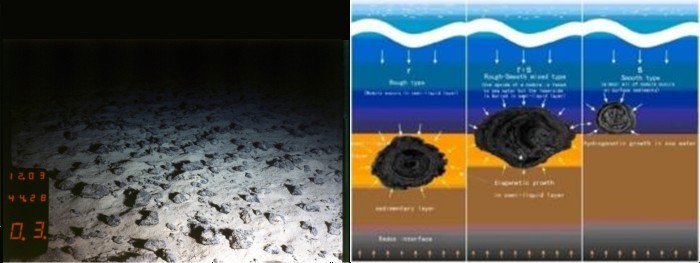 |
Training of the artificial neural network 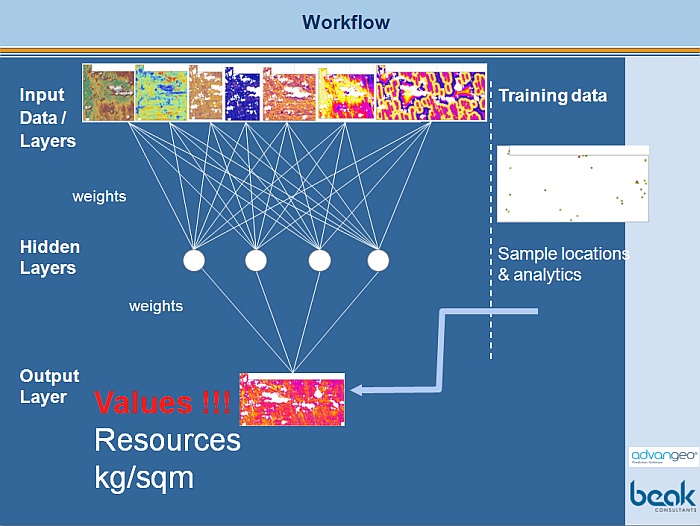 |
|
Result of advangeo® Minerals: Prediction map of see floor manganese nodule density (kg/m2) Two scenarios |
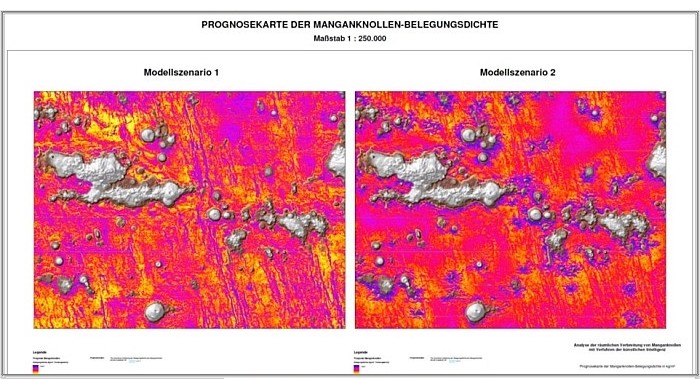 |
| advangeo® Flyer |


